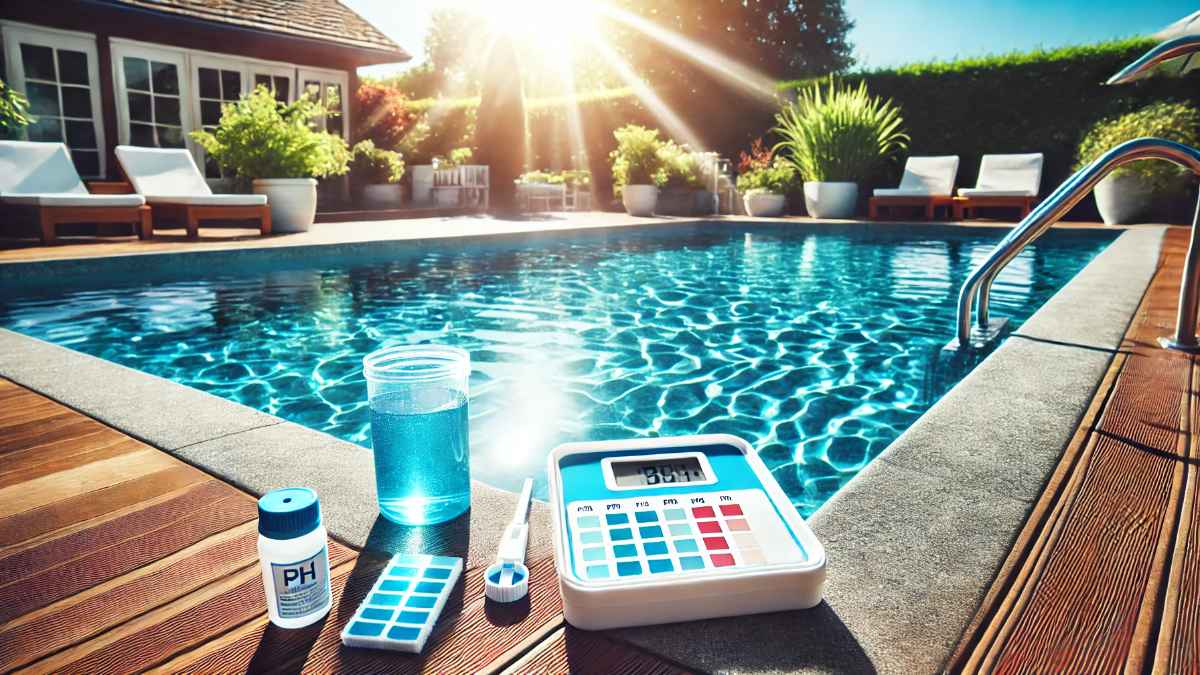Introduction
Maintaining the right alkalinity level in your pool is essential for water balance and swimmer comfort. If the alkalinity is too high or too low, it can lead to pH instability, equipment damage, and cloudy water. In this guide, we’ll explore the best ways to adjust alkalinity in a pool, using safe and effective methods.
Understanding Pool Alkalinity
What Is Total Alkalinity (TA)?
Total alkalinity (TA) measures the concentration of dissolved alkaline substances in the water. The ideal range for pool alkalinity is 80-120 ppm (parts per million).
Why Is Pool Alkalinity Important?
- Helps maintain pH stability
- Prevents corrosion or scaling on pool surfaces
- Enhances swimmer comfort
- Reduces chemical fluctuations
How to Test Pool Alkalinity
Before making any adjustments, you need to test your pool’s alkalinity using:
- Test strips – Quick and easy for home use
- Liquid test kits – Provide more precise readings
- Digital testers – High accuracy for professional maintenance
How to Raise Alkalinity in a Pool
If your pool’s alkalinity is below 80 ppm, follow these steps:
Step 1: Choose the Right Chemical
The most common chemical used to raise alkalinity is sodium bicarbonate (baking soda).
Step 2: Calculate the Required Amount
- 1.5 pounds of baking soda per 10,000 gallons of water increases alkalinity by 10 ppm.
- Use a pool calculator to determine the exact dosage.
Step 3: Add Baking Soda to the Pool
- Spread the baking soda evenly across the pool surface.
- Allow the water to circulate for 6-8 hours.
- Retest the alkalinity and adjust if needed.
How to Lower Alkalinity in a Pool
If alkalinity is above 120 ppm, take the following steps:
Step 1: Use Muriatic Acid or Dry Acid
- Muriatic acid (liquid) – Stronger, best for large pools
- Sodium bisulfate (dry acid) – Easier to handle, suitable for smaller pools
Step 2: Calculate the Correct Dosage
- 1 quart of muriatic acid per 10,000 gallons lowers alkalinity by 10-20 ppm.
- 1.5 pounds of dry acid per 10,000 gallons reduces alkalinity by 10 ppm.
Step 3: Add Acid to the Pool
- Pour the acid slowly into the deep end of the pool.
- Run the pump to circulate the water for 4-6 hours.
- Retest and repeat if necessary.
Tips for Maintaining Proper Alkalinity
- Regular testing – Check levels at least once a week.
- Use a stabilizer – Cyanuric acid helps maintain consistent alkalinity.
- Control pH levels – High pH can increase alkalinity, while low pH lowers it.
- Avoid overuse of chemicals – Excessive adjustments can create imbalances.
Common Problems and Solutions
Cloudy Pool Water
- Cause: High alkalinity
- Solution: Lower alkalinity with muriatic acid
pH Fluctuations
- Cause: Low alkalinity
- Solution: Add baking soda to stabilize pH
Scaling on Pool Surfaces
- Cause: High alkalinity and high calcium levels
- Solution: Lower alkalinity and adjust calcium hardness

Frequently Asked Questions (FAQs)
1. How often should I test my pool’s alkalinity?
Test your pool alkalinity at least once a week, especially during peak swimming seasons.
2. Can I use baking soda to raise both alkalinity and pH?
Yes, baking soda slightly increases pH while raising alkalinity, but it is not the best option for significant pH adjustments.
3. What happens if my pool’s alkalinity is too high?
High alkalinity can cause cloudy water, pH imbalance, and scaling. Use muriatic acid to lower it.
4. Is muriatic acid safe for lowering alkalinity?
Yes, when used correctly. Always dilute it first and wear protective gear to avoid skin and eye irritation.
5. Can rain affect my pool’s alkalinity?
Yes, heavy rain can dilute pool chemicals, lowering alkalinity. Test and adjust after significant rainfall.
6. How long should I wait to swim after adjusting alkalinity?
Wait at least 2-4 hours after adding chemicals and ensure alkalinity is in the proper range before swimming.
Conclusion
Maintaining proper alkalinity is crucial for a clean and healthy pool. Regular testing and adjustments using baking soda or muriatic acid will help keep your water balanced. Follow these expert tips to ensure safe, comfortable swimming all season long!

